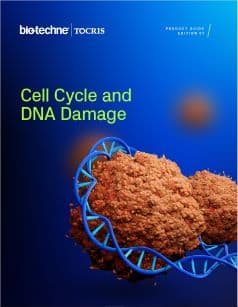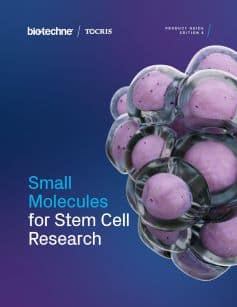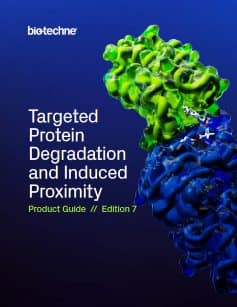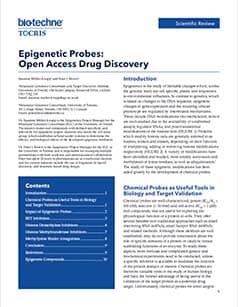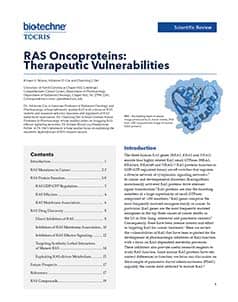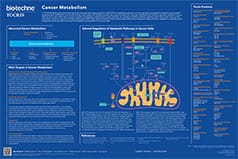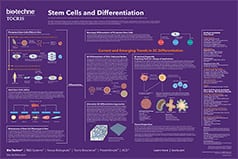Colorectal Cancer
Colorectal cancer (CRC) is the 2nd most lethal and 3rd most prevalent cancer worldwide. Screening has largely reduced the incidence of new CRC cases in several regions such as the USA and Europe, however 50% of both new cases and deaths are from the Asia Pacific region.
CRC progression follows a well-defined sequence from adenoma (benign epithelial tumor) to carcinoma (abnormal cells that divide uncontrollably and may metastasize). Due to this predictable pathway, the removal of adenomatous polyps at colon screenings, along with early detection and diagnosis, are the best methods for preventing disease progression. Polyps can be analyzed with immunohistochemistry to determine whether further treatment is needed.
Complete surgical removal of a tumor remains the best way to treat CRC; later stage cancer may require additional treatments, of which there are a range of clinical options. Genetic analysis of CRC tumor tissue may also be used to determine the most effective treatment; this is crucial as some medications can only be used to treat tumors with specific mutations.
Jump to product table
Colorectal Cancer Product Areas
Colorectal Cancer Metabolism
CRC is a complex disease influenced by epigenetics, mutagenic and environmental factors. The tissues of the colon are exposed to a wide variety of compounds from the Ancillary Material Gradeenvironment, diet, gut microflora (largely bacteria) and the resulting metabolic products of the gut microbiome. Interactions with bacteria are essential for the health of the digestive system; for example, the breakdown of dietary fiber by gut bacteria provides Butyrate (Cat. No. 3850), the main source of energy for healthy cells of the colorectal epithelium.
Butyrate itself induces death in CRC cells, inhibits glucose transport, and can be used to increase the sensitivity of CRC cells to other treatments, such as 5-Fluorouracil (Cat. No. 3257). CRC cells favor glucose over butyrate as an energy source, so glucose transporter (GLUT) inhibitors may be useful for studying CRC metabolism.
Colorectal Cancer and Inflammation
Prolonged inflammation, such as from inflammatory bowel disease, results in cell damage and is related to increased risk of developing cancer; inactivation of p53 occurs in around 85% of colitis-associated cancers. The tumor microenvironment (TME) of colorectal tumors is varied and unique to each patient, as is the microbiome within the colon. The mix of gut microflora is altered during inflammation and may directly influence the risk of developing CRC. An additional risk factor is the use of immune suppression, e.g. glucocorticoids, to treat inflammation. Although they may be critical in treating the inflammatory processes, these medicines can also promote carcinogenesis.
Molecular Subtypes of Colorectal Cancer
There are several ways in which CRC can be classified. One classification approach is the Consensus Molecular Subtype. The four Consensus Molecular Subtypes (CMS) are characterized by the presence or absence of certain features, summarized in Table 1. These pathways rarely overlap, which helps when targeting therapies.
Microsatellite instability (MSI) is caused by defects in the DNA mismatch repair system. MSI tumors tend to have a higher mutation burden and produce neoantigens that trigger an immune response - they can be studied with immune checkpoint inhibitors such as (D)-PPA 1 (Cat. No. 6515). The chromosomal instability (CIN) pathway results in a widespread loss of tumor suppressor gene functions (KRAS, TP53, SMAD4, APC), chromosomal copy number abberrations and structural alterations or defects. The CpG island methylator phenotype (CIMP) pathway leads to hypermethylation of promoter sequences of tumor suppressor genes. These specific features of each subtype can be used to refine both further research and treatment options.
| Type | Name | Features | Mutation/Changes | CIMP | SCNA | Products for Research |
|---|---|---|---|---|---|---|
| CMS1 (14%) | Microsatellite Instability Immune (MSI) | Immune activation, microsatellite instability, hypermutation | BRAF V600E and TGFBR2 mutations, JAK-STAT and caspases | + | Low | SJF 0628, Vemurafenib, CG 858 |
| CMS2 (37%) | Canonical | Epithelial; WNT and MYC signaling activation; chromosomal instability | APC and TP53 mutations; WNT and b-catenin/MYC activation | - | High | KJ Pyr9, WIKI4 |
| CMS3 (13%) | Metabolic | Metabolic dysregulation; epithelial | KRAS and APC mutations | Low | Intermediate | LC 2, MRTX 849 |
| CMS4 (23%) | Mesenchymal | Angiogenesis; matrix remodeling; stromal invasion | TGF-β activation | - | High | A 83-01 |
Genetics and Genotyping of Colorectal Cancer
The predictable pathway of CRC cancer from adenomatous polyp to carcinoma is characterized by several genetic changes including activation of Wnt/β-catenin, followed by RAS/RAF mutations then loss of p53 function.
Of over 140 known cancer driver genes, the most common in CRC are APC, KRAS, BRAF, TP53 and PIK3CA. APC, the most commonly inactivated gene in colon cancer, is a tumor suppressor that is inactivated in CRC. It regulates β-catenin and interacts with cell adhesion molecules so may also affect metastasis. KRAS is commonly mutated in CRC (up to 40% of cases) and is involved in regulating cell proliferation. BRAF is a serine/threonine protein kinase involved in cell division; mutations in this gene can lead to unchecked cell division and therefore tumor growth. TP53/p53 regulates genes that control tumor suppressor functions; inactivation of TP53 facilitates tumor progression and may also be involved in the development of CRC in patients with inflammatory bowel diseases.
Genotyping of tumor tissue, for example by using RNAscopeTM, is necessary to determine whether or not a tumor will respond to certain drug therapies. For example, a tumor bearing KRASG12C mutations will respond to MRTX 849 (Cat. No. 7488) treatment, but not to drugs that only inhibit the wild-type KRAS. A Degrader such as LC 2 (Cat. No. 7420) can be used to degrade KRASG12C but will not degrade other mutations or wild-type KRAS, allowing for specific targeting of cancer-related proteins.
Intestinal Stem Cells
The intestinal epithelium is the most rapidly self-renewing tissue in mammals, a feature that makes colorectal cells prone to the accumulation of somatic mutations. The rapid turnover is a result of cycling crypt base columnar Lgr5+ intestinal stem cells that renew the colonic epithelium every 3-5 days.
Leucine-rich-repeat-containing G-protein-coupled receptor 5 (Lgr5) is a Wnt target gene; most CRCs show hyperactivation of the WNT pathway. Lgr5 expression also influences other pathways and processes, such as notch signaling, cell migration and metastasis. Paneth cells, found adjacent to and around intestinal stem cells (ISCs), excrete factors such as Wnt ligands into the microenvironment that maintain the ISC state Wnt inhibitors may therefore be useful to learn more about the effects of this pathway in CRC.
Patient Derived Xenografts and Organoids
Organoids and patient derived xenografts (PDX) can be grown from cells or tissue taken directly from a patient. A single Lgr5+ cell can generate a gut organoid complete with crypt and villus structures, providing a way to test potential drug therapies in cells carrying the relevant genetic mutations.
PDXs are sections of tumor removed from a patient during biopsy that are implanted into and grown in immunocompromised mice. They allow the tumor to be treated in real-time, maintaining the structural and TME factors, and provide pharmacokinetic information to more accurately reflect tumor responses to drug therapies.
New and Top Products for Colorectal Cancer Research
Click product name to view details and order
| Target | Top Products | New Products |
|---|---|---|
| ALK | A 83-01 (Ancillary Material Grade available), SB 431542 (GMP available), Ceritinib, TL 13-112 | |
| ATM | KU 55933, VE 821, AZ 5704 | |
| AXL | XL 184 | |
| BRAF | SB 590885, SJF 0628, CG 858 | |
| EGFR | Gefinitib-based PROTAC® 3, Iressa (Ancillary Material Grade available), Erlotinib, EMI 48 | |
| ERBB2 | Neratinib, SJF 1528 | Tucatinib |
| HGF/MET | SU 5416, Crizotinib, SJF 8240 | |
| HIPPO | Verteporfin, XMU MP 1, (R)-PFI 2 | |
| IGFR | Ceritinib, 6bK | Linsitinib |
| JAK | PKF 115584 (Calphostin C), FH 535 | |
| KRAS | LC 2 | MRTX 849 |
| MAPK | SB 202190, PD 0325901, SB 706504, SJFα | |
| mTOR | Rapamycin, Torin 1 | |
| MYC | KJ Pyr 9, 10058-F4 | |
| NOTCH | DAPT (Ancillary Material Grade available), Compound E, TCH-165, DBZ (Ancillary Material Grade available) | |
| RET | SU 5416, SPP 86 | Vandetanib, Selpercatinib |
| SMARCA4 | SGC SMARCA-BRDVIII | FHT 1015, FHT 2344 |
| SRC | Bosutinib, A 419259 | |
| VEGF/R | SU 5402, SU 5416 | Cediranib, Vandetanib |
| WNT | CHIR 99021 (GMP available), IWP 2, Wnt-C59, LP 922056, FH 535 WIKI4 (Ancillary Material Grade available) | |
| YAP | Verteporfin |
PROTAC® is a registered trademark of Arvinas Operations, Inc., and is used under license.
Literature for Colorectal Cancer
Tocris offers the following scientific literature for Colorectal Cancer to showcase our products. We invite you to request* or download your copy today!
*Please note that Tocris will only send literature to established scientific business / institute addresses.
Cell Cycle and DNA Damage Research Product Guide
This product guide provides a review of the cell cycle and DNA damage research area and lists over 150 products, including research tools for:
- Cell Cycle and Mitosis
- DNA Damage Repair
- Targeted Protein Degradation
- Ubiquitin Proteasome Pathway
- Chemotherapy Targets
TPD and Induced Proximity Research Product Guide
This brochure highlights the tools and services available from Bio-Techne to support your Targeted Protein Degradation and Induced Proximity research, including:
- Active Degraders
- TAG Degradation Platform
- Degrader Building Blocks
- Assays for Protein Degradation
- Induced Proximity Tools
Epigenetics Scientific Review
Written by Susanne Müller-Knapp and Peter J. Brown, this review gives an overview of the development of chemical probes for epigenetic targets, as well as the impact of these tool compounds being made available to the scientific community. In addition, their biological effects are also discussed. Epigenetic compounds available from Tocris are listed.
RAS Oncoproteins Scientific Review
Written by Kirsten L. Bryant, Adrienne D. Cox and Channing J. Der, this review provides a comprehensive overview of RAS protein function and RAS mutations in cancer. Key signaling pathways are highlighted and therapeutic vulnerabilities are explored. This review also includes a detailed section on RAS drug discovery and targeting synthetic lethal interactors of mutant RAS. Compounds available from Tocris are listed.
Stem Cells Scientific Review
Written by Kirsty E. Clarke, Victoria B. Christie, Andy Whiting and Stefan A. Przyborski, this review provides an overview of the use of small molecules in the control of stem cell growth and differentiation. Key signaling pathways are highlighted, and the regulation of ES cell self-renewal and somatic cell reprogramming is discussed. Compounds available from Tocris are listed.
Cancer Metabolism Poster
This poster summarizes the main metabolic pathways in cancer cells and highlights potential targets for cancer therapeutics. Genetic changes and epigenetic modifications in cancer cells alter the regulation of cellular metabolic pathways providing potential cancer therapeutic targets.
Cell Cycle & DNA Damage Repair Poster
In normal cells, each stage of the cell cycle is tightly regulated, however in cancer cells many genes and proteins that are involved in the regulation of the cell cycle are mutated or over expressed. This poster summarizes the stages of the cell cycle and DNA repair. It also highlights strategies for enhancing replicative stress in cancer cells to force mitotic catastrophe and cell death.
